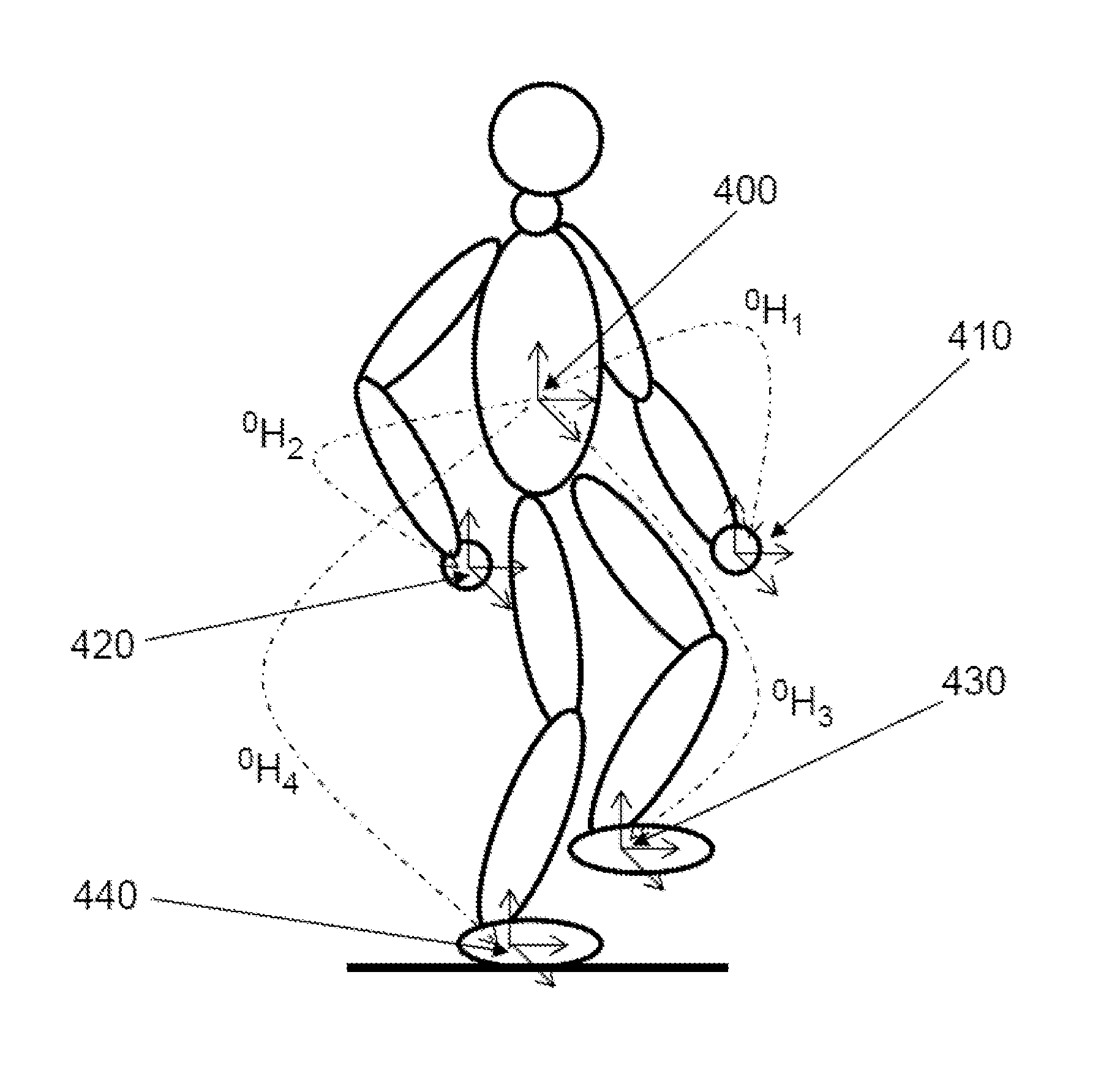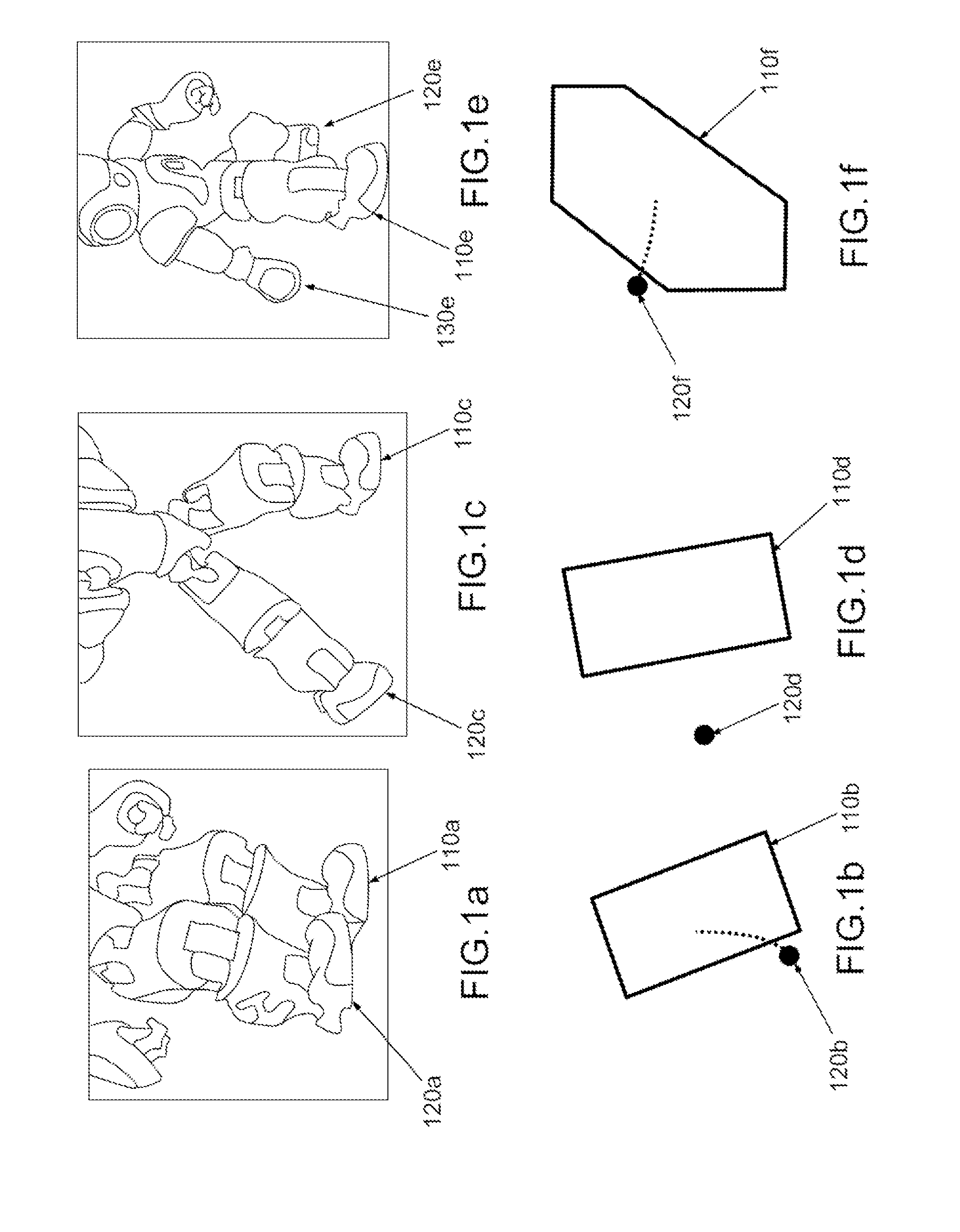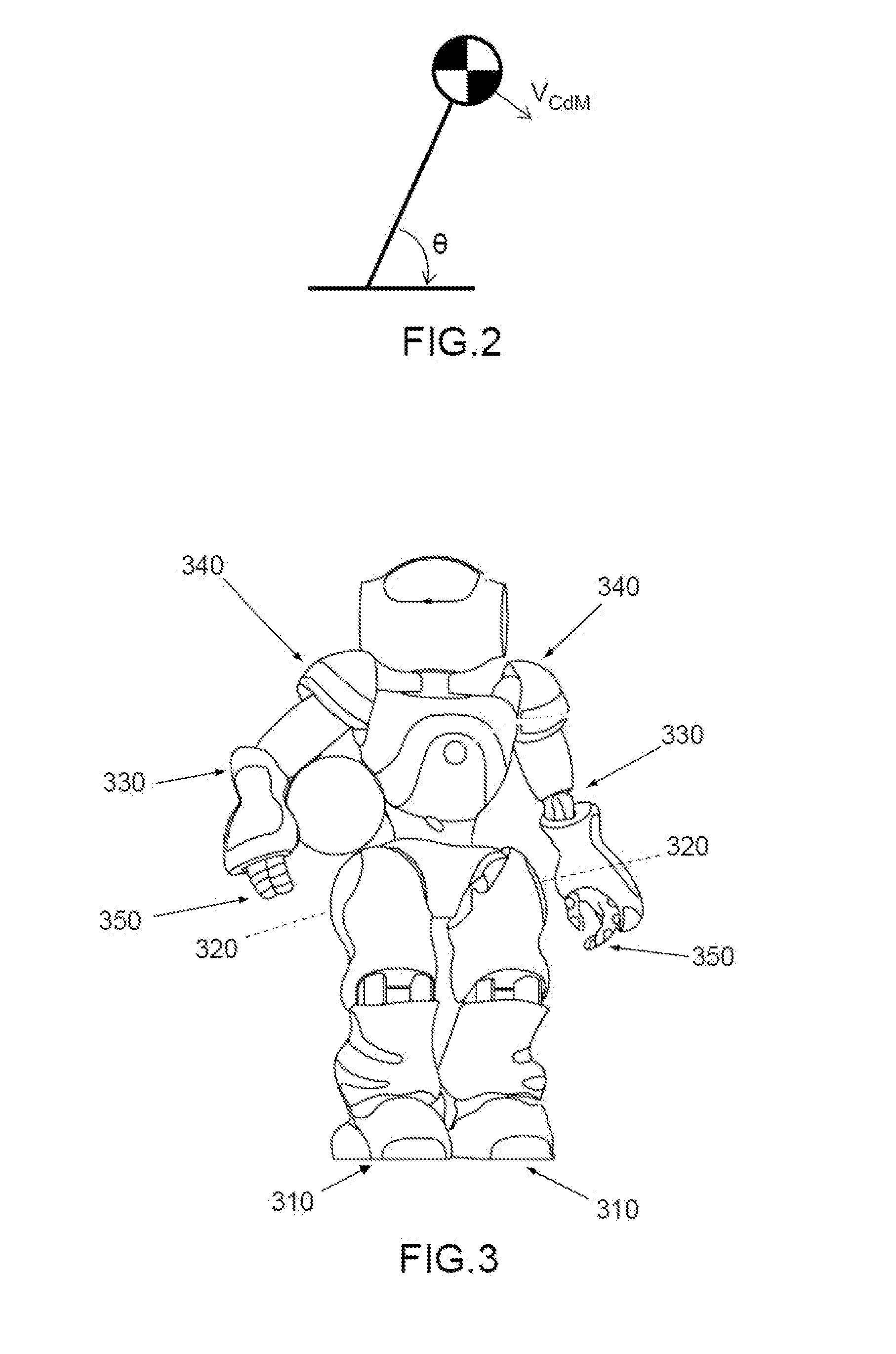Humanoid robot having fall-management capabilities, and method for managing said falls
a humanoid robot and fall management technology, applied in the field of humanoid robots, can solve the problems of increasing complexity of gestures that robots are capable of performing, affecting the performance of robots, and affecting the quality of humanoid robots,
- Summary
- Abstract
- Description
- Claims
- Application Information
AI Technical Summary
Benefits of technology
Problems solved by technology
Method used
Image
Examples
Embodiment Construction
[0040]FIGS. 1a, 1b, 1c, 1d, 1e and 1f illustrate the computation principle for predicting the falls of a robot according to the prior art.
[0041]The stability of a solid placed on the ground is conventionally determined by the position of the projection of its center of mass on the ground with respect to its support polygon on the ground.
[0042]In the case of a humanoid robot endowed with feet standing upright, as illustrated by FIGS. 1a, 1c and 1e, the support polygon is determined by the union of the areas of the soles of the feet and of the interpodal area. The support polygons corresponding to the robot's postures illustrated in FIGS. 1a, 1c and 1e are respectively illustrated by FIGS. 1b, 1d and 1f. In these three cases, characterized by the fact that one of the robot's feet is not in complete contact with the surface of advancement of the robot, is illustrated one of the problems of the prior art solution: the support polygon is reduced to the surface of the sole of one of the r...
PUM
 Login to View More
Login to View More Abstract
Description
Claims
Application Information
 Login to View More
Login to View More - R&D
- Intellectual Property
- Life Sciences
- Materials
- Tech Scout
- Unparalleled Data Quality
- Higher Quality Content
- 60% Fewer Hallucinations
Browse by: Latest US Patents, China's latest patents, Technical Efficacy Thesaurus, Application Domain, Technology Topic, Popular Technical Reports.
© 2025 PatSnap. All rights reserved.Legal|Privacy policy|Modern Slavery Act Transparency Statement|Sitemap|About US| Contact US: help@patsnap.com



